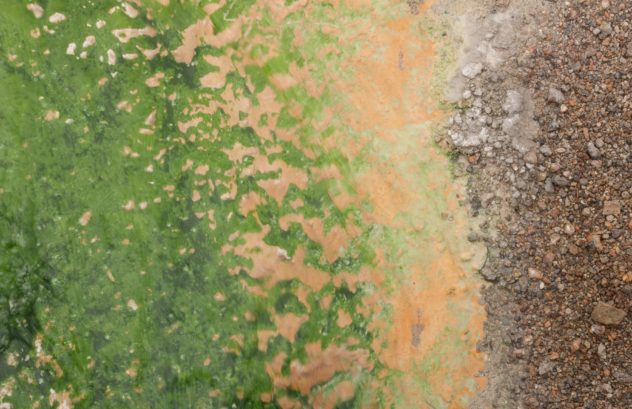Pre-reading questions:
- What is your opinion about life on other planets?
- Do you think people on Earth could survive on other planets? Please explain your answer.
Vocabulary:
- asteroid /AS-tuh-roid/
- project /pruh-JEKT/
- mile /mahyl/
- unearth /uhn-URTH/
- conduct /kuhn-DUHKT/
[noun] one of many large rocks that circle the sun
Scientists support the theory that an asteroid wiped out the dinosaurs.
[verb] to throw something forward or into the air
The spaceship projected outer space has now landed on Mars.
[noun] a unit of distance equal to 1.6 kilometers
According to her, the nearest mall is about 3 miles from here.
[verb] to find something by digging in the ground
The students used some tools to unearth an ancient artifact.
[verb] to organize or direct a particular activity
Our group conducted a survey on how long teenagers use social media.
The impact of an asteroid that struck Earth 66 million years ago left a crater known as Chicxulub based on research. Photosynthesis shut down after a large amount of debris was projected into the atmosphere. The crater, which is about 20 miles deep, resulted in the formation of the Gulf of Mexico. Blue-green algae, otherwise known as cyanobacteria, were found dwelling within fossilized plants that were washed into the crater after the incident, and survived. Cyanobacteria live within plants’ cells and have the ability to generate food for the plants.
In 2016, geologists unearthed a foundation of rocks from Chicxulub and allowed scientists around the world to conduct research on how life returned from ground zero. A scientist from the Curtin University of Australia, Bettina Schaefer, along with her team, found preserved fats within the core of the rocks. This means that cyanobacteria and other living organisms in the water caused by a tsunami after the incident were present.
In 2016, geologists unearthed a foundation of rocks from Chicxulub and allowed scientists around the world to conduct research on how life returned from ground zero. A scientist from the Curtin University of Australia, Bettina Schaefer, along with her team, found preserved fats within the core of the rocks. This means that cyanobacteria and other living organisms in the water caused by a tsunami after the incident were present.
Comprehension Questions:
- According to the article, what can cyanobacteria do?
- Where were the blue-algae found based on the article?
- What did the scientists do to know how life recovered from ground zero?
- What did Ms. Schaefer’s team find during their research?
- According to the article, what has the crater resulted into?
Discussion Questions:
- What are your thoughts about the new discovery?
- Do you think there is still life existing in the Gulf of Mexico? Please explain your answer.
- In your opinion, do all types of plants need cyanobacteria? Kindly share your thoughts.
- Does learning history help us understand more about the present? Why or why not?
- How do you believe life began on Earth?
